I’ve had my LR v1 on a torsion box table (details here) for a long time. And it has always bothered me to have the gantry going the long way. I also still want to have a go at milling the ends of boards, or maybe the sides of already built projects by clamping them to a vertical surface.
This is me dropping my thoughts in front of all of you. I hope I can find any glaring mistakes, and share some of what I’ve been obsessing over for the last few weeks.
I started with the build from the youtube channel “shop nation”. I just like the bulk and strength of that table build, and I think it will be relatively easy to come up with something in between quick and dirty, and indoor furniture this way. I want to enjoy working here, and I have enough space (volume) to put in some goodies.
I am shooting for about a 36" deep work area, and a 48" wide work area. This would fit the projects I am thinking of doing, and I don’t have room for a full sheeter. That puts the overall table top size at about 48"x60".
I have a pretty large dust collector/shop vac that I want to tuck in there. That will give me more room to fit the table without dominating the garage.
That brings me to my first compromise/design decision, which is that the height is going to be much taller than a typical work bench. The highest I have designed this so far is 40". I am OK with that. The benefits are more storage underneath. The cons are I have to lift boards higher and I will have a little more trouble working on the table. Kiddos who are interested will need a stool either way. The robot is doing most of the work, so I think this is going to be ok.
Let me show you what I have so far. These are the big structural pieces in the front and back that give me a strong start:
I add in some braces front to back and I have a skeleton bench (The placement will make more sense once you see the rest):
A few side pieces of ply (3/4") that will make it very rigid:
My Dust collector/shop vac will fit in that big pocket. I have tested rotating it in the CAD and it should rotate ok. I will be removing the stock casters. My hope is that this will stay in the corner and basically never move. So if I put anything in front of that can, I will need to be able to remove it easily to get the DC emptied. It is a huge can though, so I don’t have to empty it often. The cylinder sticking out the top is the vent, and it probably won’t stick up that high, and I can play some games to make it easier to fit if I really want to optimize the height:
I can just put one or two sheets of plywood on the top. And I may still do that. But I actually cut the pieces for a 60"x48" torsion box when I made my first table. So I can build that for nearly free. It would look like this:
With top. You can see the alignment between that inner spar and the side panel are pretty critical. I might actually avoid installing the side panel until this top is all the way installed, and use the spar as the “ground truth” for that location. I would need a pretty rigid alignment of the top to the base though:
The hole in the top is for a vertical clamping surface. I am planning on using two pipe clamps to tighten a clamp face board that would be loose in that hole. I can use it to cut the ends of boards for some joinery experiments. Or I can clamp something like a drawer with it’s face and carve or etch right on the front of the drawer. I would add another sheet for a spoil board, and that clamp face:
I have two large areas of unused storage. Under the vertical clamping hole, and to the right of the dust collector. These are both very deep (48") and 16" wide. I can build drawers (although full depth slides would be expensive) or shelves, or just stack stuff in there. I can also fit some things in front of the dust collector, but that also needs to be removable when I empty the DC (and ideally, I could check the bin without rearranging my garage). I can work on these issues later, but my current thought is to put a shelf under the clamp area and then 2-3 shelves to the right of the DC. Then I could store my small joiner, my lunchbox planer, and my small air compressor in those spots. A single drawer at the top for bits, specific wrenches, and a box of screws (the kind I use for hold downs) would be useful. Another very useful thing would be storage for medium sized panel scraps for the LR to eat. I think I could fit 10-20 48"x30" boards in either area.
What do you think? Should I do it? Is the top way too big? Should I just buy a smaller shop vac?
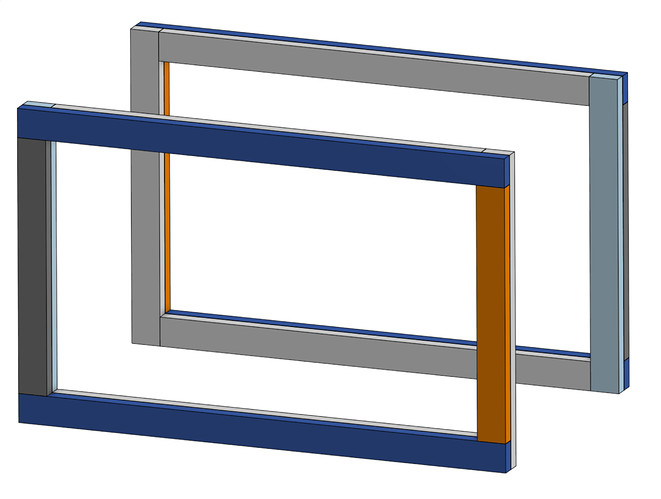
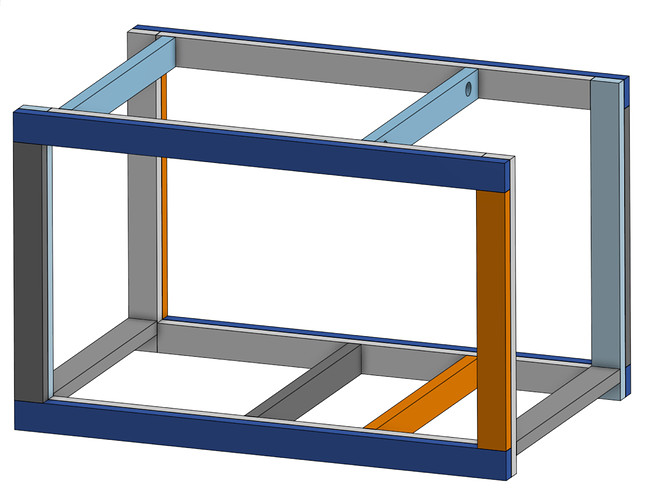
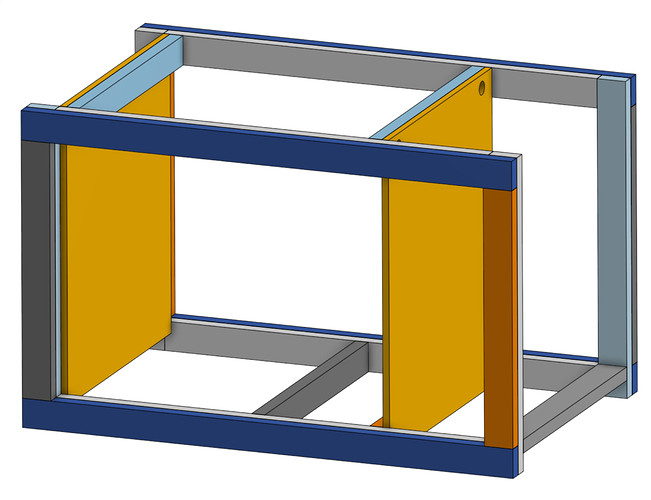
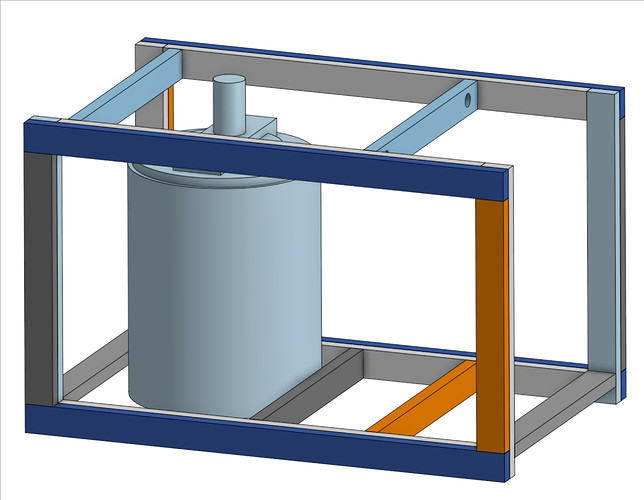
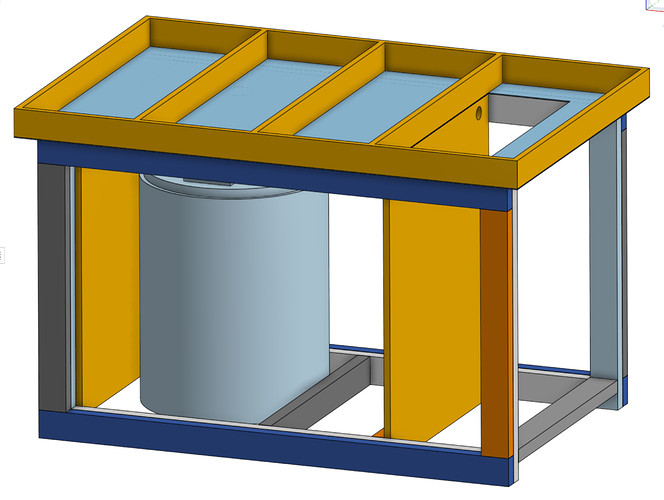
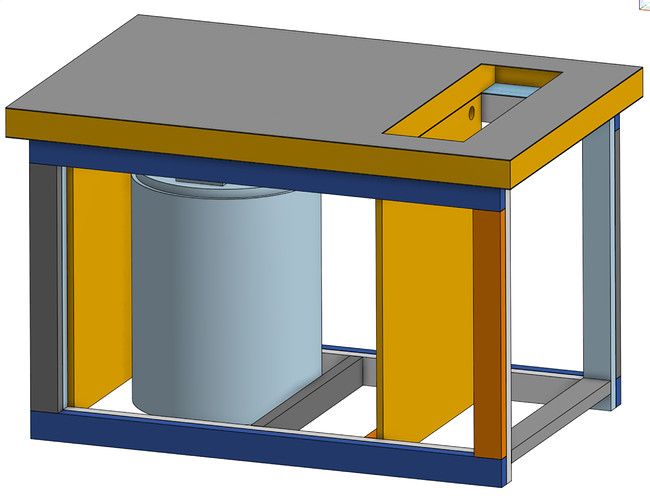
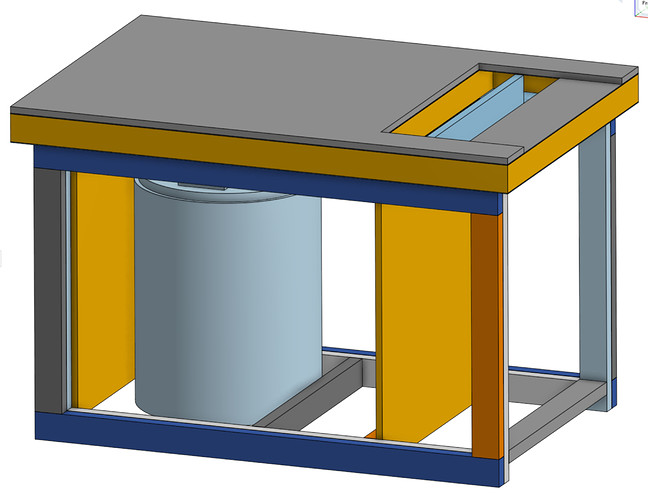
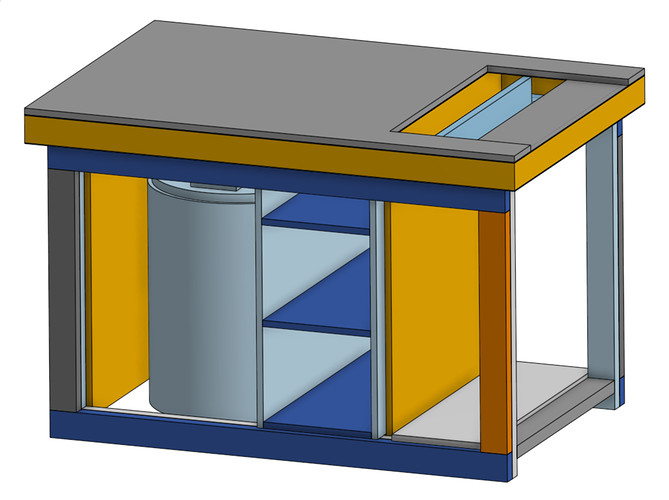

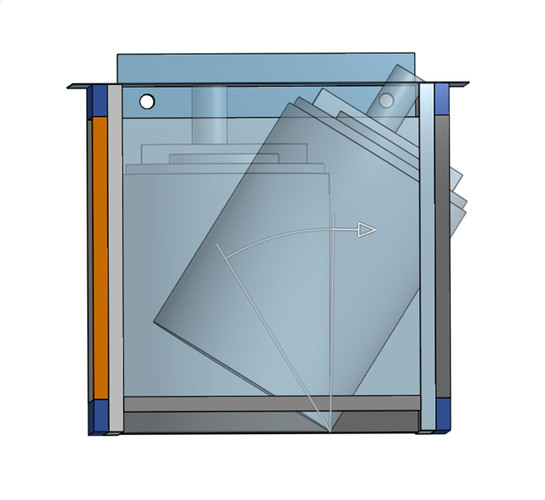
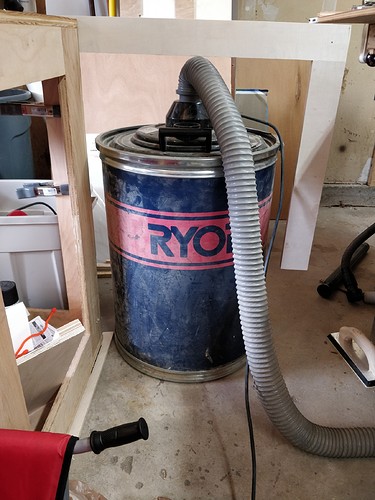
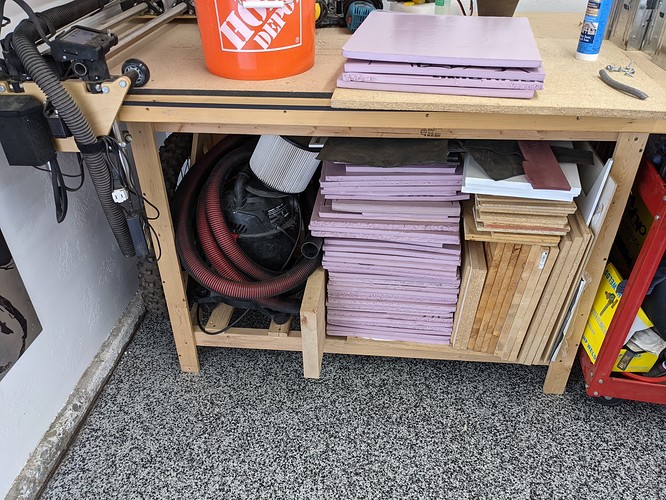
 Very organized though. And nice bright lighting.
Very organized though. And nice bright lighting.